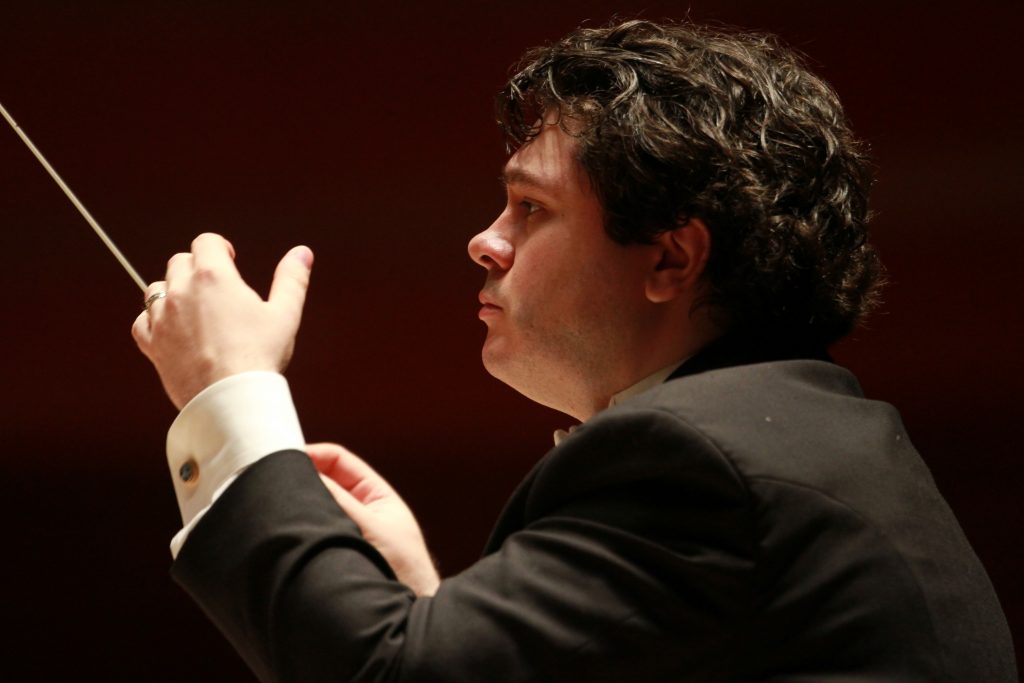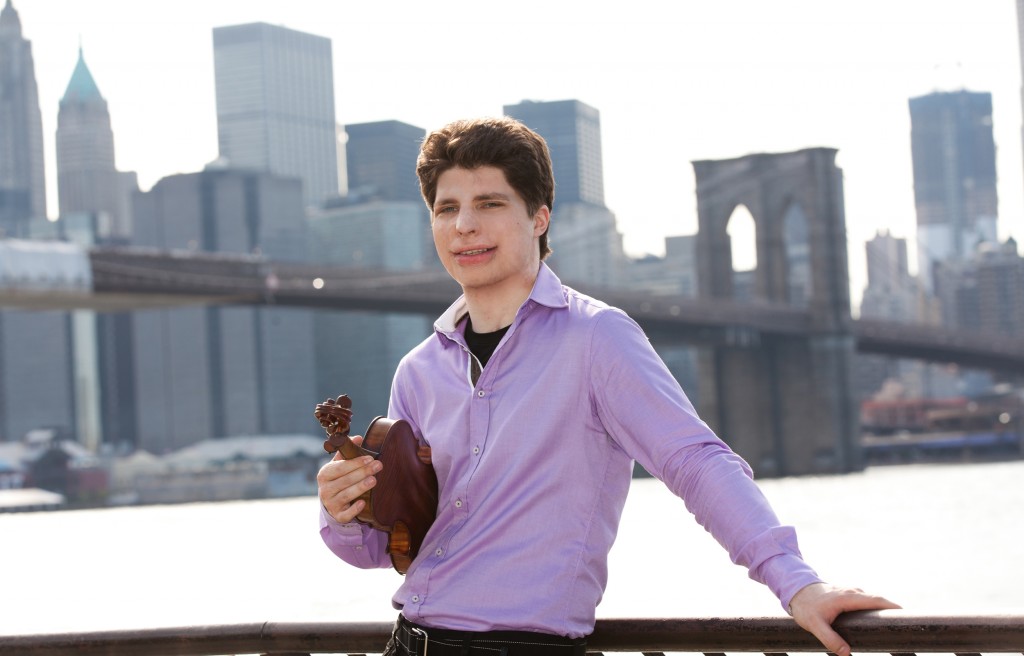Augustin Hadelich Illuminates Dvořák’s Violin Concerto with the San Diego Symphony
Between the spring 2016 revelation that San Diego Symphony Music Director Jahja Ling would retire at the end of the 2016-17 season and the announcement in February 2018 that the young Venezuelan conductor Rafael Payare had been selected as Music Director Designate, San Diego musical circles were rife with speculation. Among the names most frequently mentioned as the orchestra’s next Music Director, Romanian born and Philadelphia-based Cristian Măcelaru hovered at the top of the list.

Cristian Măcelaru [photo (c.) David Swanson]
Măcelaru was welcomed back to the San Diego Symphony podium Friday (February 15) to lead a smartly designed program featuring music of Central European composers—Janáček, Dvořák and Bartók—with a few pseudo-Hungarian pieces by Brahms tossed in for good measure. Augustin Hadelich playing Antonin Dvořák’s Violin Concerto in A Minor was clearly the concert’s draw, and he did not disappoint.

Augustin Hadelich [photo (c.) Rosalie O’Connor]
Hadelich’s eloquent extended duet with Principal Oboe Sarah Skuster in the first movement and his intimate conversation with the immaculately tuned horn section in the Adagio highlighted this exceptional engagement of soloist and orchestra. In the fall of 2013 Hadelich toured with maestro Jahja Ling and the San Diego Symphony—he played the Barber Violin Concerto on their China tour—and the mutual regard of soloist and San Diego musicians was clearly evident Friday.
For his encore, Hadelich offered the Andante from J. S. Bach’s Sonata in A Minor for Unaccompanied Violin. To this critic, Bach communicated more directly to the heart in a single movement than Dvořák did in his entire concerto.
Măcelaru opened his program with a Suite from Leoš Janáček’s opera The Cunning Little Vixen, a magical tapestry of buzzing insects and forest murmurs expressed in the composer’s signature short, angular phrases. Sir Charles Mackerras, the Suite’s arranger, kept the composer’s deft and often eccentric orchestration, radiantly suggesting the opera’s bucolic atmosphere.
More than a generation younger than Janáček, Béla Bartók painted a darker world view more attuned to 20th-century angst than that of his Czech colleague, although his six-movement Dance Suite from 1923 was written a year before Janáček’s The Cunning Little Vixen. Măcelaru elicited a taut, cleanly defined account of the Dance Suite from the orchestra, suavely navigating its frequent changes of mood and texture. Like much of Bartók’s music, the thematic shapes hark back to the stark, modal folk music he researched early in his career, but the actual themes are his own. In this work we hear the genesis of an orchestral style that found its fruition in the stellar Concerto for Orchestra he wrote for Serge Koussevitzky the last year of his life.
After this feast of authentic Hungarian and Czech orchestral music, listening to five orchestral arrangements of Johannes Brahms’ “Hungarian Dances” that he originally wrote for four-hand piano amusement seemed beside the point. What Brahms and his generation of composers did not realize: the style of music they thought was Hungarian was actually the popular music of the Romany people who lived in Central Europe. Tuneful, spirited dance music cannily orchestrated by Brahms to augment his publisher’s bottom line, these dances sent the Symphony Hall audience out humming and smiling.
This concert was presented by the San Diego Symphony on February 15, 2019, in the Jacobs Music Center’s Copley Symphony Hall in downtown San Diego. It will be repeated on February 16 and 17 in the same venue.


